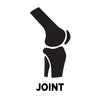Singh RP, Singh P, Ibrahim HP et al. Land application of sewage sludge: physicochemical and microbial response. Rev Environ Contam Toxicol. 2011; 214:4161.
Natural and organic foods. FMI 2002. FDA.gov. https://www.fda.gov/ohrms/dockets/dockets/06p0094/06p-0094-cp00001-05-Tab-04-Food-Marketing-Institute-vol1.pdf
Organic FAQs. Nature 428, 796-798 (22 April 2004) | doi:10.1038/428796a.
USDA Organic Presentation. National Organic Program. http://www.ams.usda.gov/AMSv1.0/getfile?dDocName=STELPRDC5084677
National Organic Standards Board (NOSB) Crops Subcommittee Proposal Hydroponic/Aquaponics/Bioponics September 6, 2016.
Guidance for Industry Q3C — Tables and List. U.S. Department of Health and Human Services, Food and Drug Administration, Center for Drug Evaluation and Research (CDER), Center for Biologics Evaluation and Research (CBER), February 2012, ICH Revision.
USP 467 Residual solvents. https://www.usp.org/sites/default/files/usp_pdf/EN/USPNF/generalChapter467Current.pdfUSP 561 Pesticide residues. http://www.usp.org/sites/default/files/usp_pdf/EN/USPNF/gc_561.pdf
Liva R. Toxic solvent found in curcumin extract, Integrative Medicine, 2010; 9:50.
https://toxnet.nlm.nih.gov/cgi-bin/sis/search/a?dbs+hsdb:@term+@DOCNO+66
Dhanya and Sasikumar. Molecular marker based adulteration detection in traded food and agricultural commodities of plant origin with special reference to spices. Current Trends in Biotechnology and Pharmacy, 2010; 4: 454.




